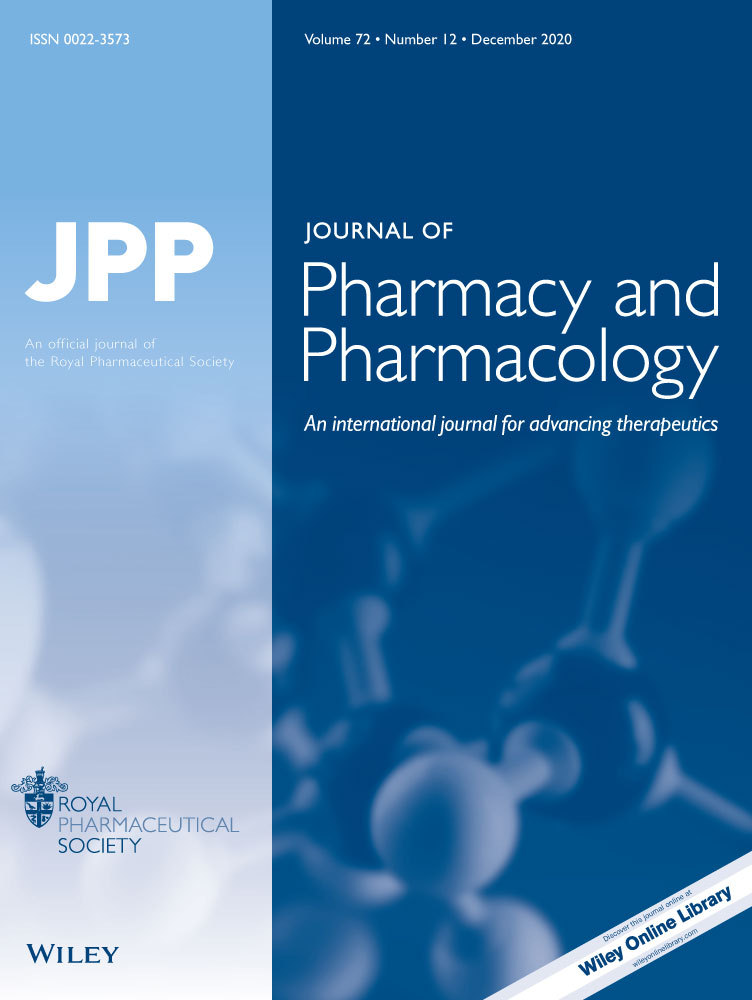Effect of hesperidin on the oral pharmacokinetics of diltiazem and its main metabolite, desacetyldiltiazem, in rats
Abstract
Objectives This study was to investigate the effect of hesperidin, an antioxidant, on the bioavailability and pharmacokinetics of diltiazem and its active major metabolite, desacetyldiltiazem, in rats.
Methods A single dose of diltiazem was administered orally (15 mg/kg) in the presence or absence of hesperidin (1, 5 or 15 mg/kg), which was administered 30 min before diltiazem.
Key findings Compared with the control group (given diltiazem alone), hesperidin (5 or 15 mg/kg) significantly altered the pharmacokinetic parameters of diltiazem, except for 1 mg/kg hesperidin. The area under the plasma concentration-time curve from time 0 h to infinity (AUC0-∞) was significantly (5 mg/kg, P < 0.05; 15 mg/kg, P < 0.01) increased by 48.9–65.3% and the peak plasma concentration (Cmax) was significantly (P < 0.05) increased by 46.7–62.4% in the presence of hesperidin (5 or 15 mg/kg). Consequently, the absolute bioavailability (F) of diltiazem with hesperidin was significantly (5 mg/kg, P < 0.05; 15 mg/kg, P < 0.01) higher than that in the control group. Hesperidin (5 or 15 mg/kg) significantly (P < 0.05) increased the AUC0-∞ and 15 mg/kg of hesperidin significantly (P < 0.05) increased the Cmax of desacetyldiltiazem. However, the metabolite-parent ratio (MR) of desacetyldiltiazem was not significantly changed in the presence of hesperidin.
Conclusions Hesperidin significantly enhanced the oral bioavailability of diltiazem in rats. It might be considered that hesperidin increased the intestinal absorption and reduced the first-pass metabolism of diltiazem in the intestine and in the liver via an inhibition of cytochrome P450 3A or P-glycoprotein.




